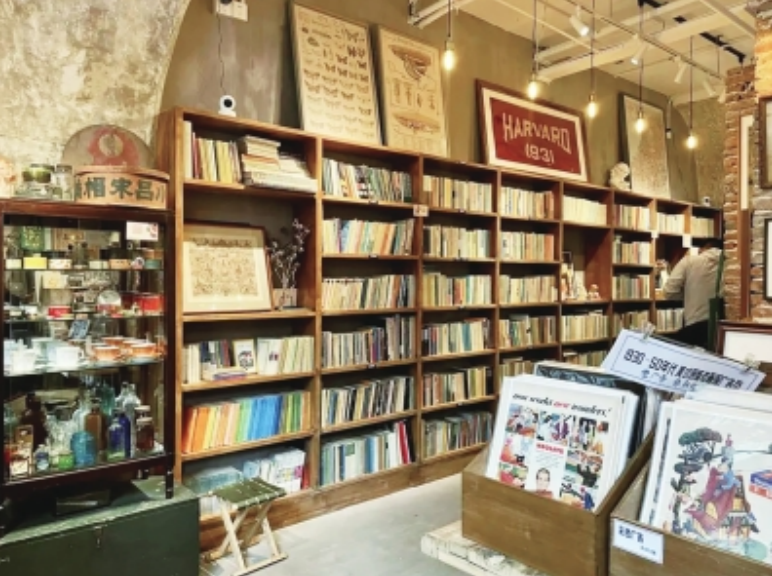A Bookstore Sells Old Times

By Ge Minmin
There is a bookstore selling "old times" in the 1933 Shanghai, a former slaughterhouse. The bookstore, named Vintage, is jointly operated by a couple. They have a seed in their hearts, and they would like to turn old things into a cool culture.
A Post-90s Couple Run the Secondhand Bookstore Full-time
Siyuan is a post-90s boy, whose retro clothes are also consistent with the decoration style of the store. He wears a flat shirt, a tie of retro colors, and a beret. Siyuan and his girlfriend jointly run the shop. He is mainly responsible for old books and second-hand goods, while his girlfriend takes over clothing and jewelry. Originally, both of them had their own jobs, but because they liked old things and yearned for a freely-controlled life, they became full-time shopkeepers.
Young people like Siyuan who are so fond of old things may be hard to see, and it has been for nearly ten years that he collected old books and goods.
"Old" is another cool culture
What do you think of when talking about second-hand bookstores and second-hand stores? Maybe it's a shop that neglects decoration. At the door sits an uncle who wears reading glasses, reads newspapers, and shakes a fan. The aisle is full of old books of all kinds and different styles. The prices range from a few yuan to several tens of yuan. Whether you can find treasures depends on your eyes. Siyuan wanted to change the so-called stereotype.
With regard to the furnishings in the store, he always holds such an attitude: "If I were a person in that era, what would it look like with the aesthetics at that time?" He does not regard these old items in the store as "old". For young people, they are just new, modern and cool, and contain cultural complexity and historical details.
Siyuan said, "From a global perspective, the second-hand markets for used books and second-hand goods is actually a very dynamic industry that has formed a closed-loop business. In China, in Shanghai, the business format is not mature, and there is no stable consumer." The world's top second-hand bookstore is his benchmark and goal.
Exploring the Old Shanghai from the Old Things
In the eyes of Siyuan, these mottled and yellowish objects, such as old photos, old picture books, old toys and antiques, are a way to restore the past life and reflect the open, innovative and inclusive urban spirits of Shanghai.
"When it comes to Shanghai 80 years ago, many people will blurt out 'modern', 'prosperous' and 'gathering place of foreigners', but that is just a concept of words. People who haven't studied food, clothing, housing and transportation do not understand the Shanghai in old times. What did people eat? What did they wear? What were their hobbies? And what was their life like from morning to night? These old articles in the store can provide us with answers and restore the life in the past."
In the shop, you can see the work logs of the employees of Shanghai Electric Power Company in 1943, all of which were written in English. The circuit drawings are meticulous and neat, which shows their seriousness and dedication. In the can of face powder with the brand of Chang'e with exquisitely carved roses, you can imagine the elegance of women, which has not changed from the past to the present.
A yellow handwritten restaurant order in English, a black-and-white wedding photo taken by Wang Kai Photo Studio, a Liangyou Magazine printed with women in cheongsam... "These things are often ignored by the great history and ordinary people, but I think they are worth exploring. What makes the modern life in old Shanghai? How is the urban spirit and character of Shanghai inherited? I hope to explore the real details of the Shanghai culture from the perspective of physical objects."